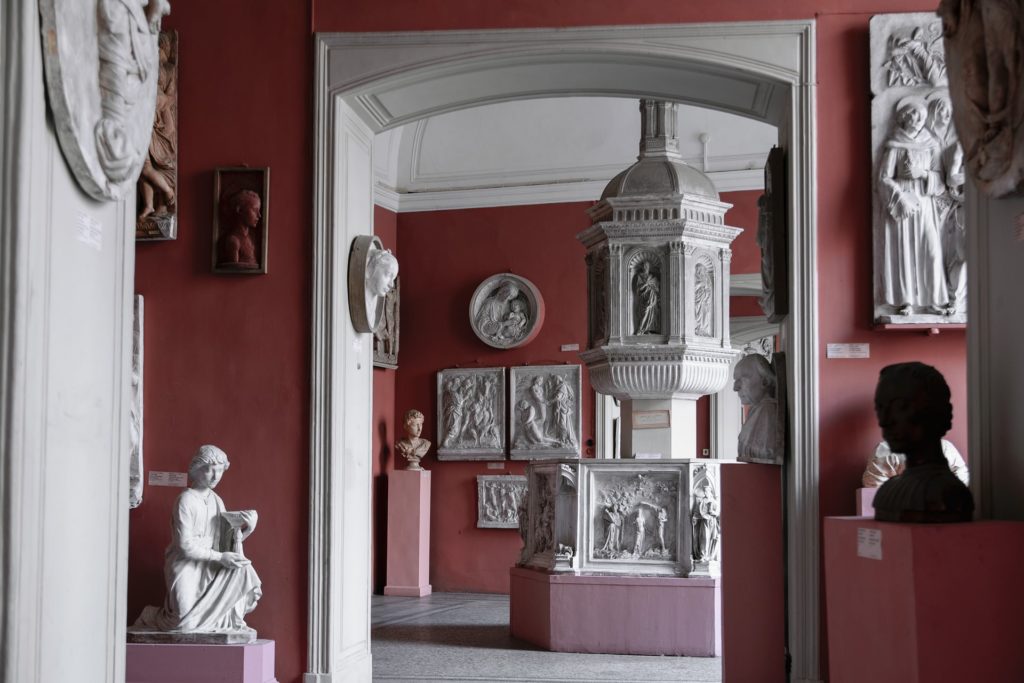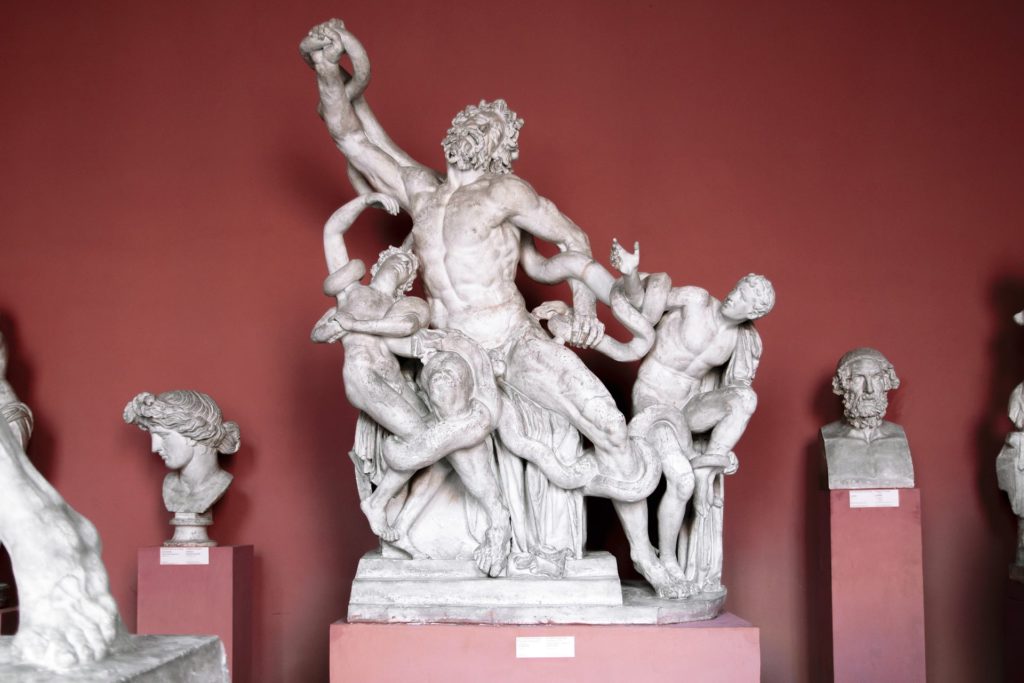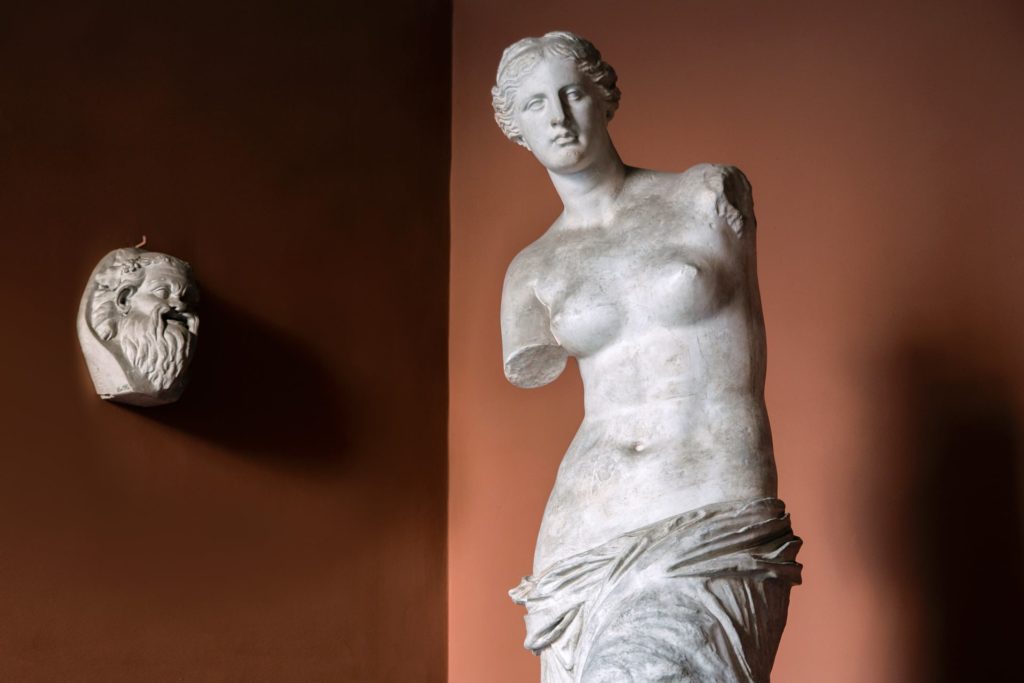Cast Gallery
The collection of the casts is unique in its completeness, methodical selection and excellent quality of execution. They were made by Italian masters in the late XVIII-early XIX centuries and forms are taken directly from the originals. These reproductions very accurately convey all the plastic features of the originals. The collection of this Cast Gallery dates back to 1757, when the Academy of arts was founded in Saint Petersburg. During the period of classicism, which was established in Russian art in the second half of the XVIII century, these works were accepted as samples, and artists were instructed to follow them. Copying «Antiques» was a mandatory stage in the process of training artists of all specialties.

At the beginning of the XX century, a unique collection of casts was placed according to the historical and chronological principle. The exhibition is located in 33 rooms on the first floor around the circular courtyard and includes about 600 monuments from the 3rd Millennium BC to the second half of the XVIII century. In the first halls of the Department there is a collection of casts from monuments of Ancient Egypt and Assyria. Interesting play with excellent statues of pharaohs khafra and amenemhat II, the sculpture of a Sphinx from Tanis, tomb reliefs at Saqqara, reliefs of the palaces of the Assyrian kings in Nineveh and Kalhu.
The most significant group of works is made up of unique repetitions from sculptural monuments of Ancient Greece. The collection provides an opportunity to trace the entire course of development of Greek sculpture. The sculptural exposition is complemented by models of ancient Greek structures, photographs, plans, and antique ceramics.
The collection is famous for its casts from sculptures from the classical period of the art development of ancient Greece, sculptures of the temple of Zeus in Olympia, statues of Pythagoras of Rhegia " the Boy who takes out the splinter "and Myron «Discobolus».
The heyday of Greek sculpture is represented by a model of the Acropolis of Athens, as well as reproductions of the Parthenon sculptures on the Acropolis of Athens. These are metopes, pediments and a relief frieze, a model of the statue of Athena Parthenos by Phidias.
Casts from the statues of Praxiteles — «Eros», «Aphrodite of Cnidus», «Hermes with the infant Dionysus» convey spirituality and the finest plastic processing of marble.
The era of Alexander the great is represented by repetitions from the statues of Lysippus «Apoxyomenes „and“ Resting Hermes». A different direction, recreating the ideal beauty of man, is shown by casts from Leochar's works — «Apollo Belvedere» and " Artemis /Diana/ Versailles». A vivid idea of Greek sculpture of the Hellenistic era is given by casts from the magnificent sculptures «Nika of Samothrace», « Aphrodite with FR.Melos / Venus De Milo/», «Laocoon». The variety of plastic art of this period is characterized by the repetition of two huge high-relief slabs of the altar of Zeus in Pergamum depicting the battle of the gods with giants.
In the Ancient Rome section, casts from portraits from the eras of Augustus, Tiberius, Hadrian, and Caracalla are extremely accurate. The cast from the equestrian portrait statue of Consul Balba is unique. Interesting are the repetitions from the marble reliefs of Trajan's column in Rome.
The development of decorative sculpture in Ancient Rome: altars, sarcophagi, reliefs of buildings — is reflected in the collection of the Department by a large number of excellent casts. Models of the Pantheon, Colosseum, and triumphal arches made of cork wood complete the composition.
In the collection of the Department there are casts from works of Western European sculpture of the XII-XIV centuries, related to the Gothic period of the history of medieval art. Reproductions of the sculptures of Notre-Dame de Paris and the tombs of the Dukes of Burgundy and Berry are remarkable for the dynamic curves of elongated figures with emotional gestures that convey deep human experiences.
Casts from Renaissance works: reliefs on biblical themes from the doors of the Baptistery in Florence, the heads of St. George and the prophet Jeremiah Donatello from the Church of Or San Michele in Florence, sculptures of the Siena Cathedral and reliefs of the Church of San Petronio in Bologna by J. della Quercia-are richly represented in the Museum.
A worthy place in the exhibition is occupied by reproductions from the works of the great Michelangelo Buonarotti. This is a statue of the old Testament prophet Moses, filled with inner strength, «Slaves» for the tomb of Pope Julius II in the Church of San Pietro in Rome, the head of David in Florence, a portrait of Brutus full of tragedy.
Sculptures of Italy, France and Germany of the XVI-late XVIII centuries-picturesque reliefs of the «Fountain of the innocents» in Paris, «Three graces» from the tombstone of king Henry II.Pylon, filled with expressive human suffering statue of Milo of Croton P.Puget, «bather» by E. Falcone-differ in a rich play of light and shadow. Models of two groups of «horse Tamers» from the place de La Concorde in Paris served P. Clodt as prototypes of sculptures of the Anichkov bridge in St. Petersburg. The exhibition is complemented by reproductions from reliefs of palaces and churches in France.




